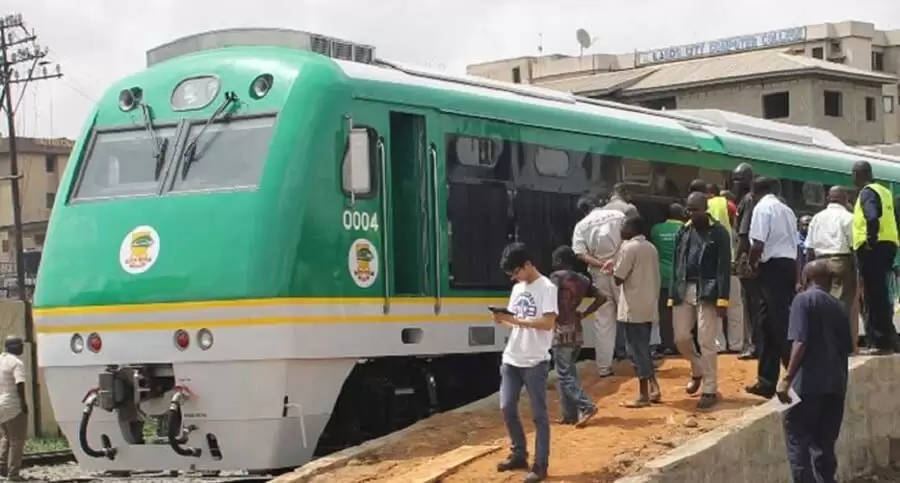The pressure from the families of the abducted Abuja-Kaduna passengers may have forced the Nigeria Railway Corporation (NRC) to put a hold on the resumption of train services within that route, THE WHISTLER has learnt.
Sources with knowledge of the operation told this website that the “rail tracks have been completed”, but there is a likelihood for the Corporation to sustain the temporary suspension of their services pending the release of the abducted passengers among others.
Advertisement
Recall that 362 train passengers heading to Kaduna on March 28 were attacked after terrorists detonated an Improvised Explosive Device (IED) on the rail track. It resulted in the death of eight passengers, 26 injured and no fewer than 62 kidnapped.
The situation had made the NRC halt its operations along that route, following the level of damage on the coaches as well as the rail track.
Although their prolonged absence from operating has not only recorded a deficit of approximately N380m since the attack, it has led to huge economic damage for the Corporation.
Recall that the Minister of Transportation, Rotimi Amaechi had said the NRC generates a minimum of N300m monthly from the Kaduna-Abuja train services.
Advertisement
Preventive Measures
Speaking on the issue, the founder of Beacon Consulting Limited and Security Intelligence Expert, Kabir Adamu told THE WHISTLER that there may be salient reasons the NRC is sustaining the suspension of its operation.
Adamu said, aside from the insistence of the families of the abducted passenger to secure the release of the victims, the pressure and public scrutiny that the incident caused is another reason.
He added that the decision to resume “will require political endorsement”, which is “unlikely” due to the current circumstances.
He, however, said the government was yet to implement the required mitigation measures against a reoccurrence which include the four layers of security arrangement. The layers are “detect, delay, deny and response.
Advertisement
According to him, the Detect layer is the use of “human to technological solutions to identify intruders and send a message (an alert)”, citing the ‘technical surveillance solution’ suggested by Minister Amaechi.
Adamu said the Delay layer is a “physical barrier that reduces the ability or increases the effort required by the intruder to gain access to the protected area”. He said some of these include fences, walls, anti-climbing wires, illumination etcetera.
On the Deny layer, he said it is “any offensive solution that seeks to prevent access to the protected item.”
He cited instances to include “using armed security or a variegated system of offensive protective security.”
The Response layer, he said requires a capable, effective and efficient response capability where the intruder is able to circumvent the first three and will be met with an immediate reinforcement within an acceptable period of 10 minutes.
However, in cases where reinforcement may take more than the acceptable time, Confidence MacHarry, a Security Analyst with SB Morgan Intelligence listed some security devices required to be installed on the nation’s rail tracks to safeguard travelers for posterity.
Advertisement
Speaking to THE WHISTLER MacHarry said there are different protection equipment that utilises perimeter protection with sound systems that accurately detect intrusions. He listed others to include perimeter CCTV and mobile indoor cameras with smart video options.
He added, “Security at the Tunnels, is basically to avoid derailment in cases where you have something eventually or intentionally falling on the track that will ordinarily derail the train. You can have the installation of censors’ barriers to cover the track platform.
“You could also install censors in the fences of the tracks and the tunnels to detect objects. You could also install CCTV to support and verify alarms connected to other sensors, especially when you are hearing an alarm and you are not seeing anything.
“So, that is where the back-up CCTV comes in, to check if the alarm is actually true – as regards what you are looking or if what the censors picked up is of a security threat”.



